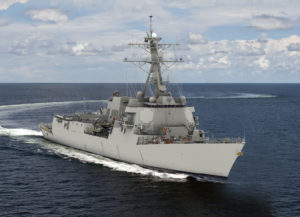
The Congressional Budget Office’s (CBO) annual analysis of the Navy’s 30-year shipbuilding plan argues the next Large Surface Combatant (LSC) ship may cost $67 billion more than the Navy is planning. The Navy plans to develop and purchase a new LSC to succeed Arleigh Burke-class DDG-51 Flight I and Flight II ships when they retire from the late 2020s to 2030s. The Navy’s fiscal year 2020 30-year plan expects production of the LSC to start in 2025, five years sooner…

 By
By 











